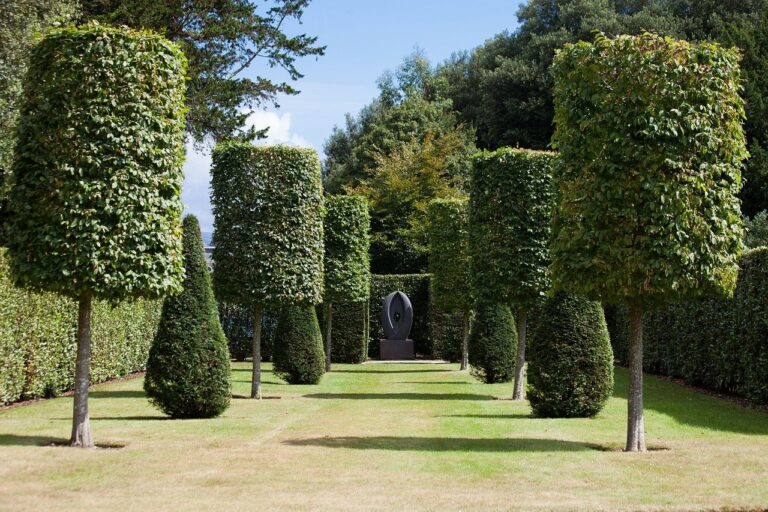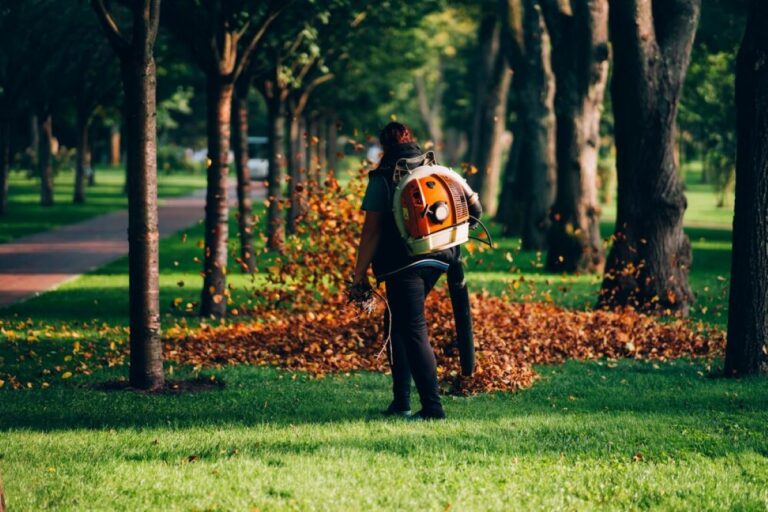Trees are a beautiful and important part of our environment, providing shade, oxygen, and habitat for wildlife. However, to keep your trees healthy and looking their best, regular tree pruning is essential.
In this complete guide, we will explore the importance of tree pruning, the science behind it, how to choose the right tree pruning service, tree pruning cost, DIY tips and techniques, and post-pruning tree care.
Understanding the Importance of Tree Pruning
Tree pruning plays a crucial role in maintaining the health and longevity of your trees. It involves removing dead or damaged branches, shaping the tree for better growth, and controlling its size. By pruning your trees regularly, you can improve their overall health, enhance their aesthetic appeal, and ensure the safety of your property and loved ones.
When it comes to tree health, pruning is a vital practice. It goes beyond just removing dead or diseased branches. Pruning promotes tree health by not only eliminating potential breeding grounds for pests but also by preventing the spread of fungal infections. By removing these branches, you are effectively reducing the risk of infestations and diseases that can weaken the tree’s immune system.
Furthermore, regular pruning helps improve air circulation and sunlight penetration within the tree’s canopy. This increased airflow and sunlight exposure can significantly reduce the chances of fungal diseases taking hold. With proper pruning, you are creating an environment that is less favorable for the growth and spread of harmful fungi.
Another benefit of pruning is its ability to stimulate new growth and strengthen the tree’s structure. By selectively removing certain branches, you are encouraging the tree to produce new, healthy growth. This new growth not only enhances the tree’s appearance but also reinforces its structure, making it more resistant to wind and storms. A well-pruned tree is better equipped to withstand harsh weather conditions, reducing the risk of branch breakage and potential property damage. Learn more about the art of tree pruning.
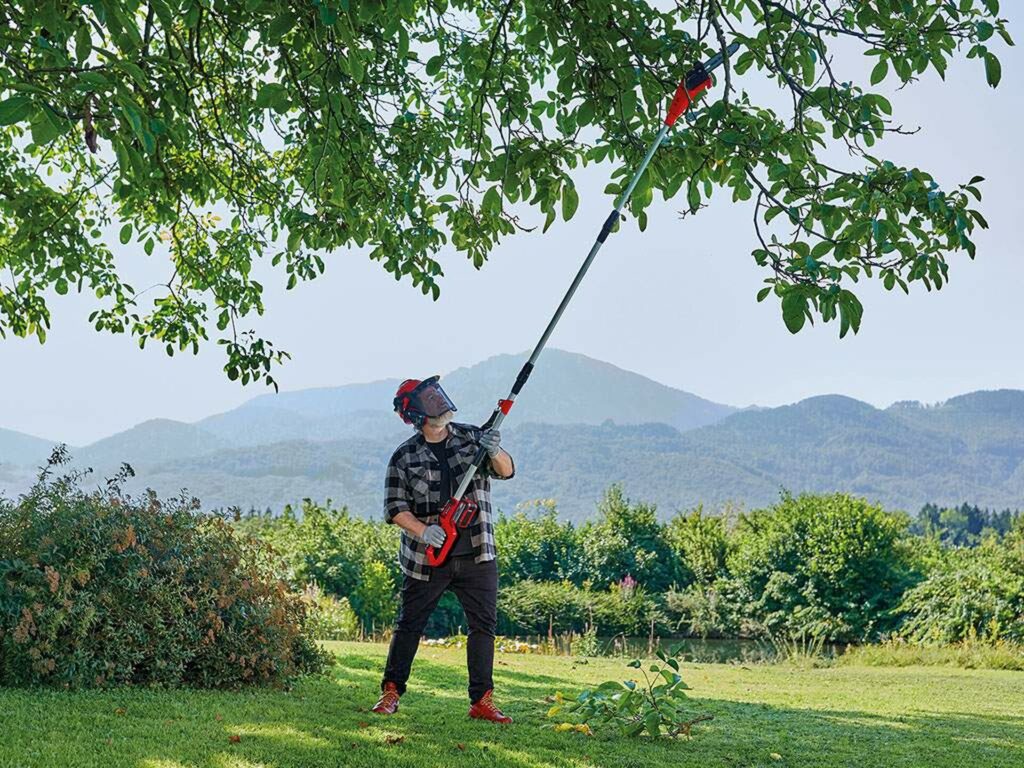
Boosting Aesthetic Appeal with Proper Tree Care
A well-pruned tree not only looks visually appealing but also adds value to your property. By removing overcrowded or crossing branches, pruning creates a more balanced and symmetrical tree shape. This improved structure enhances the overall aesthetic appeal of your landscape, creating a more pleasing and harmonious environment.
In addition to shaping the tree, pruning can also enhance flowering and fruiting. By selectively removing certain branches, you can direct the tree’s energy to the desired areas, promoting more abundant blooms and a higher yield of fruits. Pruning can help create a more vibrant and fruitful tree, adding to the beauty and value of your property.
Ensuring Safety by Regular Tree Maintenance
One of the key reasons for tree pruning is to ensure the safety of your property and everyone around it. Weak or damaged branches can pose a significant risk, especially during storms or high winds. These branches are more prone to breakage, potentially causing property damage or even injury to people or animals.
Regular pruning removes these hazardous branches, reducing the chance of accidents and property damage. By proactively addressing weak or damaged branches, you are mitigating potential risks and creating a safer environment for everyone. It is essential to prioritize regular tree maintenance, including pruning, to minimize the possibility of accidents and ensure the well-being of your loved ones.
The Science Behind Tree Pruning
Pruning is not just a random act; it follows scientific principles that influence tree growth and development. Understanding these principles will help you make informed decisions when pruning your trees.
When it comes to tree pruning, there is a lot more going on than meets the eye. It’s not simply about trimming away branches; it’s about understanding the intricate relationship between a tree’s growth patterns and the effects of pruning. By delving deeper into the science behind tree pruning, you can gain a greater appreciation for this essential practice.
How Pruning Influences Tree Growth
Pruning stimulates new growth by directing the tree’s energy to specific areas. It can encourage the development of strong branches and a sturdy tree structure. By removing certain branches, you can also shape the tree to fit its surroundings or prevent interference with nearby structures.
When a tree is pruned, it triggers a response within the tree’s physiology. The removal of branches signals to the tree that it needs to allocate resources to other areas, promoting the growth of new shoots and leaves. This redirection of energy can result in a more robust and healthier tree.
Furthermore, strategic pruning can help establish a balanced tree structure. By selectively removing branches, you can encourage the growth of dominant branches while suppressing the growth of weaker ones. This process ensures that the tree develops a sturdy framework that can withstand environmental stresses, such as strong winds or heavy snowfall.
The Right Time to Prune Your Trees
The timing of tree pruning plays a crucial role in its success. Different tree species have specific pruning requirements, and pruning at the wrong time can harm the tree. In general, late winter or early spring, before the tree starts actively growing, is the best time to prune many trees. However, some trees may require different pruning times depending on their blooming or fruiting patterns.
During the dormant season, trees are less susceptible to diseases and pests, making it an ideal time for pruning. Additionally, without the presence of leaves, it is easier to assess the tree’s structure and identify problematic branches that need to be removed.
It is important to note that not all trees follow the same pruning schedule. Some trees, such as flowering cherries, should be pruned immediately after they bloom to avoid interfering with next year’s flower production. Fruit trees, on the other hand, may require pruning during specific stages of fruit development to promote better yields.
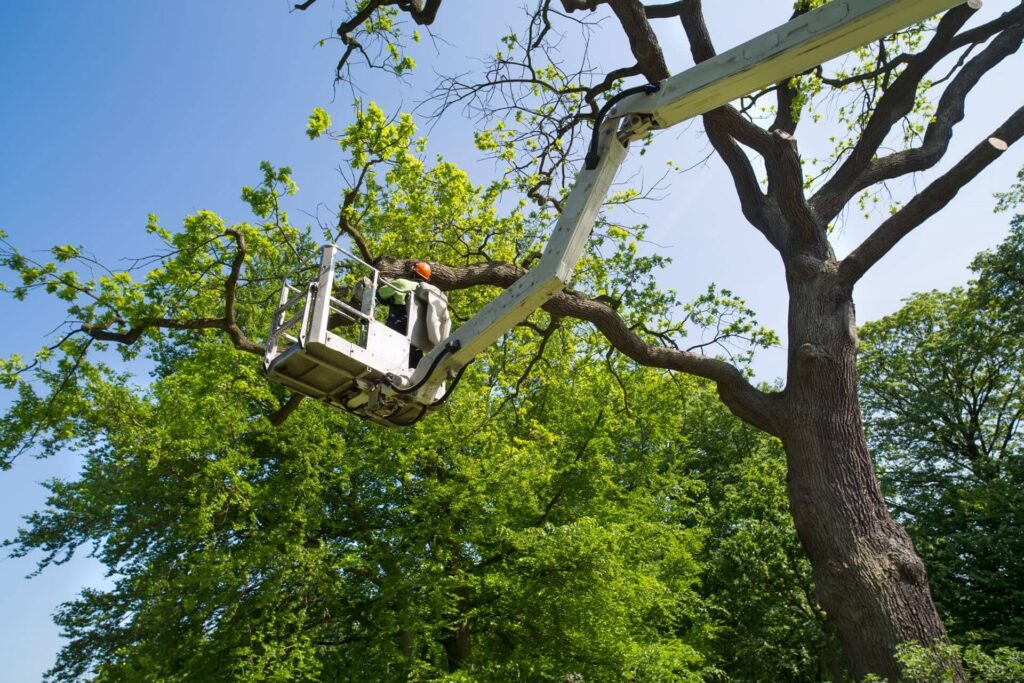
Understanding the Different Types of Tree Pruning
Tree pruning can be categorized into several types, including crown thinning, crown cleaning, crown raising, and crown reduction. Each type serves a specific purpose and requires careful consideration.
Crown thinning involves selectively removing branches to increase light and air penetration. By reducing the density of the tree’s canopy, crown thinning allows more sunlight to reach the lower branches and the ground below. This technique not only improves the tree’s overall health but also benefits the surrounding vegetation by providing them with the necessary light for growth.
Crown cleaning, as the name suggests, focuses on removing dead, diseased, or broken branches. By eliminating these branches, you can prevent the spread of diseases and reduce the risk of falling limbs. Crown cleaning is particularly important for maintaining the safety and aesthetics of the tree.
Crown raising raises the lower branches to provide clearance for pedestrians or vehicles. This type of pruning is commonly done in urban areas where trees need to coexist with human activities. By lifting the crown, the tree can maintain its beauty while ensuring the safety and convenience of people passing underneath.
Crown reduction reduces the overall size of the tree without severely damaging its structure. This technique is often employed when a tree has grown too large for its surroundings or poses a risk to nearby structures. By selectively removing branches, the tree’s height and spread can be reduced, allowing it to fit harmoniously within its environment.
As you can see, tree pruning is a complex and intricate process that goes beyond simply cutting away branches. It requires a deep understanding of tree biology, growth patterns, and the specific needs of each tree species. By applying the scientific principles behind tree pruning, you can ensure the health, safety, and beauty of your trees for years to come.
Choosing the Right Tree Pruning Service
When it comes to maintaining the health and aesthetics of your trees, pruning plays a crucial role. While DIY pruning can be an option for small trees or minor trimming, it’s advisable to hire a professional tree pruning service for larger or more complicated tasks. By entrusting the job to experts, you can ensure that your trees receive the care they need while minimizing the risk of damage or injury.
Here are some factors to consider when making your decision:
Factors to Consider When Hiring a Tree Pruning Service
- Their experience and expertise in tree pruning: It’s important to choose a tree pruning service with a proven track record of successfully pruning trees of various species and sizes. Look for professionals who have extensive knowledge of tree biology and understand the proper techniques for pruning different types of trees.
- Proper licensing and insurance: Before hiring any tree pruning service, it’s essential to verify that they have the necessary licenses and insurance coverage. This will protect you from any liability in case of accidents or damages during the pruning process.
- Positive customer reviews and references: Take the time to read customer reviews and ask for references from past clients. This will give you insights into the quality of their work, their professionalism, and their ability to meet customer expectations.
- Availability of modern equipment and tools: Tree pruning requires the use of specialized equipment and tools to ensure precision and efficiency. A reputable tree pruning service should have access to the latest equipment and tools, allowing them to perform the job effectively.
- Adherence to safety standards and best practices: Tree pruning can be a hazardous task, especially when dealing with large trees or working at heights. It’s crucial to choose a service provider that prioritizes safety and follows industry best practices to minimize the risk of accidents or property damage.
Questions to Ask Your Potential Tree Pruning Service Provider
Before hiring a tree pruning service, make sure to ask them the following questions to ensure they are the right fit for the job:
- How long have you been in the tree pruning business? Experience is key when it comes to tree pruning. Look for a service provider with several years of experience, as they are more likely to have encountered a wide range of pruning scenarios and developed the necessary skills and expertise.
- Can you provide references from past clients? Asking for references allows you to get feedback from previous customers and gain insight into the service provider’s professionalism, reliability, and the quality of their work.
- Do you have the necessary licenses and insurance coverage? It’s crucial to ensure that the tree pruning service you hire is properly licensed and insured. This protects you from any potential liability in case of accidents or damages during the pruning process.
- What techniques and tools do you use for tree pruning? Different tree pruning techniques are used depending on the tree species, size, and desired outcome. A knowledgeable service provider should be able to explain the techniques they use and the reasons behind their choices.
- How will you dispose of the pruned branches and debris? Proper disposal of pruned branches and debris is an important consideration. Make sure the service provider has a plan for removing and disposing of the waste responsibly, whether through chipping, hauling, or recycling.
By carefully considering these factors and asking the right questions, you can make an informed decision when choosing a tree pruning service. Remember, investing in professional expertise will not only ensure the health and beauty of your trees but also provide you with peace of mind.
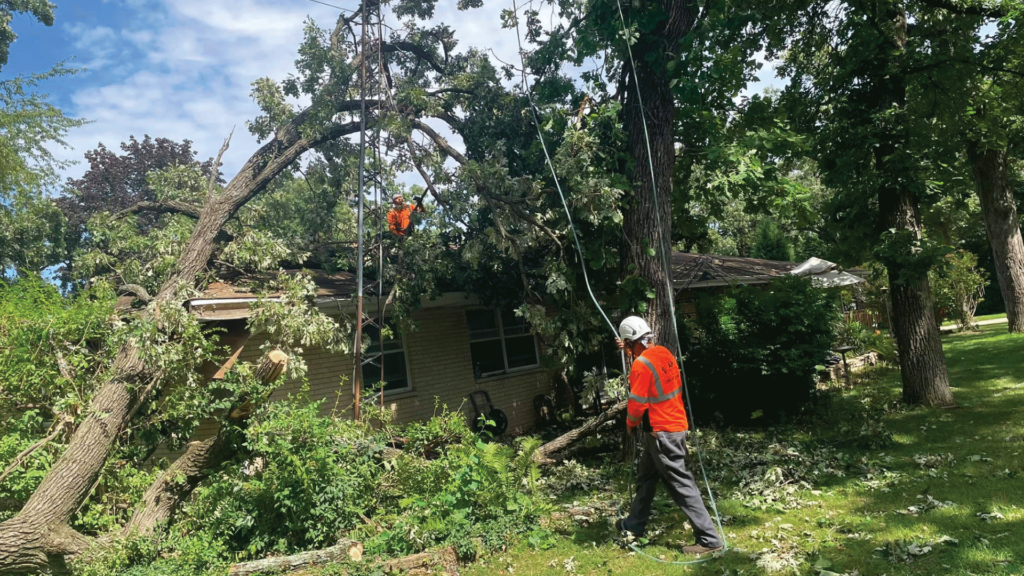
DIY Tree Pruning: Tips and Techniques
If you prefer to take a hands-on approach to tree pruning, here are some essential tips and techniques to ensure successful results:
Essential Tools for Tree Pruning
Investing in the right tools will make your pruning tasks easier and more efficient. Some essential tools for tree pruning include pruning shears, lopping shears, pruning saws, and pole pruners.
Step-by-step Guide to Pruning Your Trees
1. Start by inspecting the tree and identifying any dead or diseased branches that need to be removed.
2. Use sharp and clean pruning tools to make precise cuts, angling them away from the tree trunk or branch collar.
3. Remove any branches that are crossing or rubbing against each other.
4. Strategically thin the crown by selectively removing branches to improve airflow and light penetration.
5. Step back occasionally to assess the tree’s shape and symmetry as you prune.
6. After pruning, clean up the area by removing fallen branches and debris.
Post-Pruning Tree Care
Once you have pruned your trees, it’s important to provide them with proper care to ensure optimal recovery and continued growth.
How to Maintain Your Trees After Pruning
1. Water the tree deeply immediately after pruning to help it recover and prevent stress.
2. Apply a layer of mulch around the base of the tree to conserve moisture and suppress weeds.
3. Regularly monitor the tree for any signs of stress, disease, or pest infestation.
4. Follow a regular fertilization schedule to provide the tree with essential nutrients for healthy growth.
Signs Your Tree Might Need Additional Care
While proper pruning can significantly improve tree health, there may be instances where additional care is necessary. Keep an eye out for warning signs such as excessive dieback, abnormal growth patterns, or insect infestations. If you notice any concerning changes, consult with a certified arborist to assess the tree’s health and provide appropriate recommendations.
Remember, tree pruning is a delicate process that requires knowledge and skill. Whether you opt for professional tree pruning services or decide to tackle the task yourself, always prioritize the long-term health and well-being of your trees.

